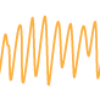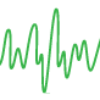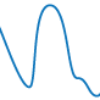The Brain Map
A Customized, Accurate Analysis Of Your Brain
The heart of our system is the Quantitative Electroencephalography (QEEG), also known as a brain map. A Brain Map is a non-invasive tool we use to identify the problem areas of the brain. The QEEG is designed to objectively and scientifically evaluate a person’s brainwave patterns and takes the guesswork out of determining a person’s condition. There is no more accurate tool available today for identifying irregular brainwaves.
The Brain Map process is painless, safe, accurate and non-invasive. There really is no better tool for analyzing brainwaves and collecting customized data for each individual.
How Does A Brain Map Work?
A brain map involves scanning the brainwaves on the surface of the scalp using a nylon cap. This method is known as an Quantitative Electroencephalogram (QEEG) and provides the most accurate recording of your brain function. The system then compares your brainwave activity to a database of established standards of normal brain function to determine if problems are present. The comparison is both age and gender stratified meaning we are comparing apples to apples. It does not identify specific conditions: It shows a map of problem areas in the brain that we can use to expertly determine likely neurological conditions.
The procedure consists of placing a snug cap on the head. Embedded within the cap are 19 small sensors that are designed to measure and record electrical activity (or brainwaves) coming from the brain. These sensors DO NOT put any electrical current into the brain – they simply record signals coming from the brain.
A brain map takes about 30 minutes to complete. Once the mapping is done, your data is uploaded to our database and a report is generated. We will analyze your data and determine whether or not to accept your case. If you are a good candidate for care an individualized care option will be prepared.
Why Brainwaves Are Important
Brainwaves are extremely important to how we function. There are 4 main brainwaves, and each of them regulates a different part of our body. From sleep to emotions to critical thinking, we would not be who we are without our brainwaves. Let’s learn about each one.
Ready to get started?

Your evaluation includes:
Call (334) 271-2882 Today
Contact Us
Herb Shop Wellness
Neurofeedback Specialist,
Carl Schmidt, N.D.
Montgomery Office
8151 Vaughn Rd
Montgomery, AL 36116
CONTACT FORM
Mon – Friday: 10 am – 6 pm
Saturday: 10 am – 5 pm



